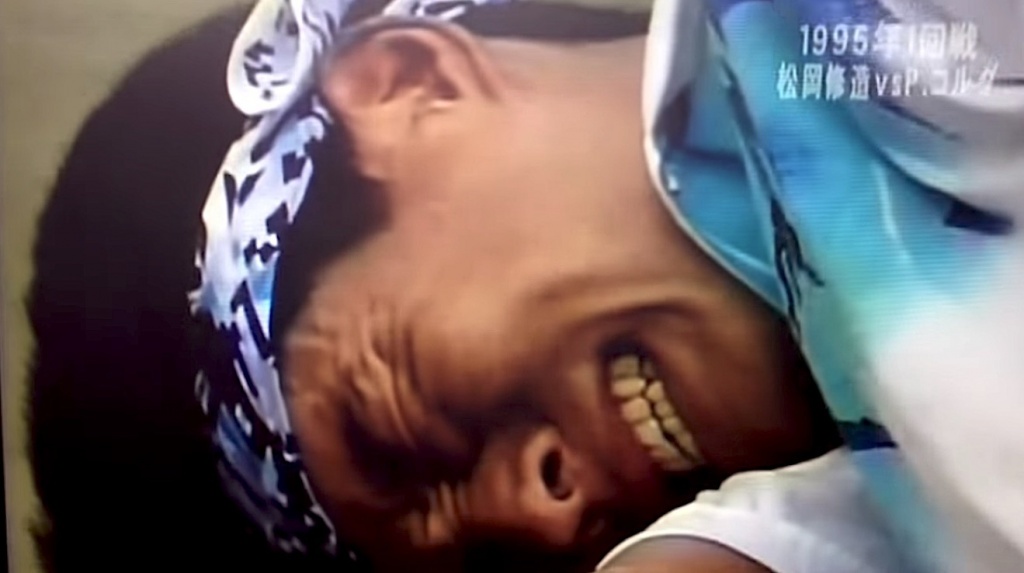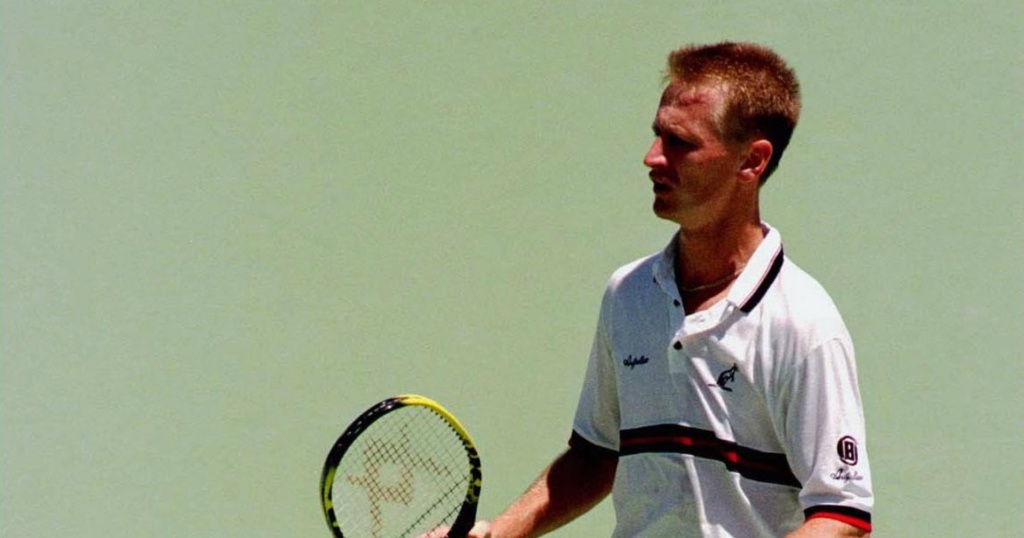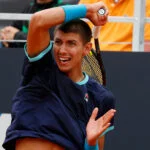August 28, 1995: The day Shuzo Matsuoka was defaulted after severe case of cramping
Every day, Tennis Majors takes you back in time to relive a tennis event which happened on this specific day. On this day in 1995, Shuzo Matsuoka was screaming in pain due to severe cramping as he lay on the court but the rules in place meant he could not receive medical attention
 Shuzo Matsuoka, On this day 08/28
Shuzo Matsuoka, On this day 08/28
What happened exactly on that day?
On this day, August 28, 1995, Japanese player Shuzo Matsuoka was defaulted at the US Open, after suffering from cramps in the fourth set of his first-round match against Petr Korda while he was up two sets to one (6-7, 7-6, 7-6, 5-5). Matsuoka was left screaming on the ground for three minutes before he could receive any help, as the rules at the time did not allow medical treatment for cramps. The sight of Matsuoka suffering on the court without assistance led to a swift change in the rules of professional tennis the following year.

The players involved: Shuzo Matsuoka and Petr Korda
- Shuzo Matsuoka: From Tokyo to the Wimbledon quarter-finals
Shuzo Matsuoka was born in 1967 in Tokyo, Japan. He claimed his only title on the tour in 1992 in Seoul, where he defeated Todd Woodbridge in the final (6-3, 4-6, 7-5). The same year, he obtained one of his most best career results by finishing runner-up to Wayne Ferreira at the Queen’s Club Championships (6-3, 6-4). In 1995, he achieved the best Grand Slam performance of his career, reaching the quarter-finals at Wimbledon and winning the first set against world No 1 Pete Sampras before eventually going down in four sets (6-7, 6-3, 6-4, 6-2). Matsuoka reached his highest ranking of world No 46 in 1992.
- Petr Korda: The unpredictable top 5 player from the Czech Republic

Petr Korda was born in 1968. The left-handed Czech won six titles on the tour, the biggest one being the 1993 Grand Slam Cup, where he defeated Michael Stich in the final (2-6, 6-4, 7-6, 2-6, 11-9), earning $2 million in prize money. He was mostly known for having reached the final at the 1992 French Open, where he lost in straight sets to Jim Courier (7-5, 6-2, 6-1).
That year, he also obtained his highest world ranking, breaking into the top five. Korda was an unpredictable player, able to beat the best players on a good day, but also to lose against almost anybody. In July 1995, ranked No 46, he lost to Nuno Marques (No 119) in Washington just a few weeks after he had upset world No 5 Michael Chang at Wimbledon.
The venue: Flushing Meadows, New York
The US Open (known as the US Nationals before 1968 and the start of the Open Era) was established in 1881, and although it is the only Grand Slam to have been played every single year without an interruption since its beginning, it moved locations several times throughout the 20th century. First held in August 1881 on grass courts at the Newport Casino on Rhode Island, the tournament shifted to New York in 1915, where it was held at the West Side Tennis Club, at Forest Hills until 1977 (with the exception of the years between 1921-1923, when the event was held in Philadelphia).
From 1975 to 1977, the event was played on clay. In 1978, the US Open left the West Side Tennis Club, which was now too small for such a marquee event, and headed to the USTA National Tennis Center, located in Flushing Meadows, New York. At the same time, it was decided to change the surface to hard courts. The National Tennis Center was one of the biggest tennis complexes in the world: its Center Court was the Louis Armstrong Stadium, with a capacity of 14,000 spectators.
The facts : Matsuoka falls to the ground but can’t get help
Petr Korda and Shuzo Matsuoka had already been playing for three hours and twenty-six minutes when their first-round match suddenly caught everyone’s attention in the tennis world. The Japanese player led two-sets-to-one, having lost the opener, 7-6, before taking the next sets by winning two other tie-breaks and the players were tied at 5-5 in the fourth set.
Matsuoka was serving, but after he hit a forehand winner on the first point of his game, he fell down screaming, struck down by cramps. “When I hit the forehand, just cramping very bad, and I fell down and all I can do is scream and I was in so much pain, I know [the] match is finished, but I was very sad,” he said later.
In 1995, the rules in tennis did not allow any treatment for cramps, which were not considered an injury but as a loss of conditioning. If a player needed help to get up, it would automatically cause a default. So poor Matsuoka was left in pain on the hard court for three minutes, in front of a shocked audience, while the umpire counted him out like a boxer before he was eventually defaulted. Only then could his opponent run to him, along with a team of paramedics.
Although the public, as well as many commentators, and even Korda himself, pointed out how ruthless the cramping rules were, Matsuoka didn’t think he had been unfairly treated.
“I think it is the right rule. I think they shouldn’t touch it. Cramping is one thing, you have to work out and you have to be more fit and cramping is different than pulling a muscle, so I think it is just a rule and I think I agree with the rule.”
The medical community had a different opinion, saying that withholding treatment for players could be dangerous for their health.
What next? Rules change and are modified in 2008
Although Matsuoka had complied with the rule and hadn’t called for any change, the cramping rules would be changed shortly after this US Open first round which thus went down in tennis history. Players would now be allowed the same treatment for injuries and cramp. However, 12 years later, in 2008, the rule would be changed again, in order to prevent tactical use of the medical time-out, and players would only be allowed treatment for cramps during changeovers.
If a player suffers cramp so severe that it requires treatment before a change of ends, the player will forfeit the game. This happened in the 2023 Roland-Garros semi-final between Novak Djokovic and Carlos Alcaraz, when the Spaniard suffered from all-body cramping and required a medical time-out mid-game, forfeiting the game to the Serb.














